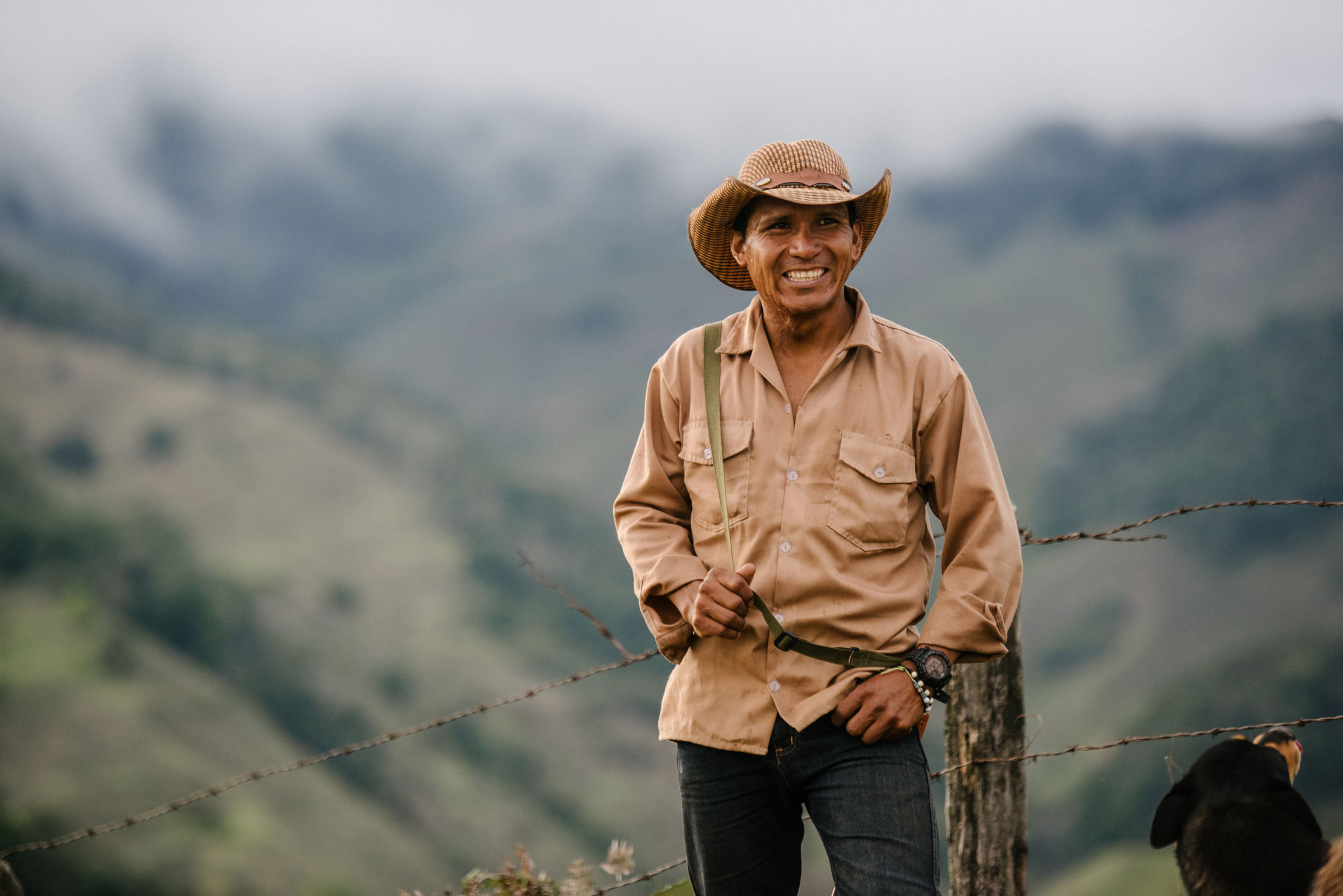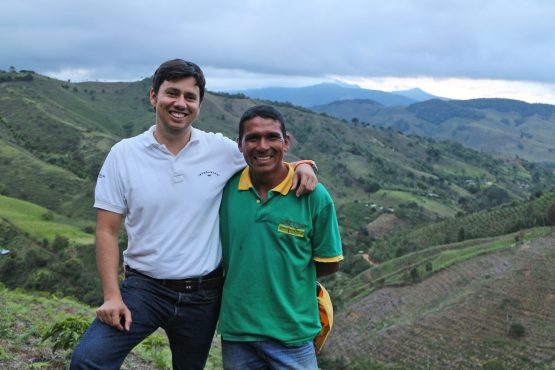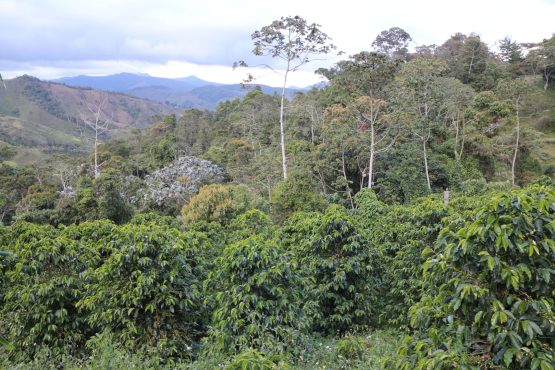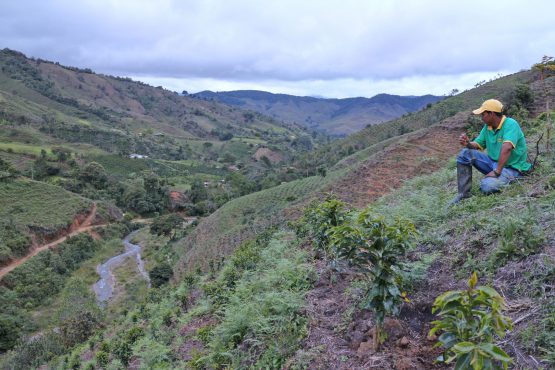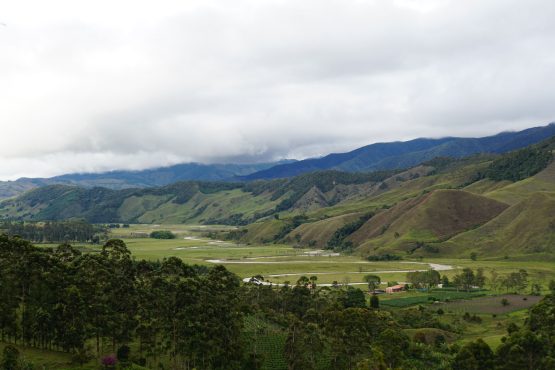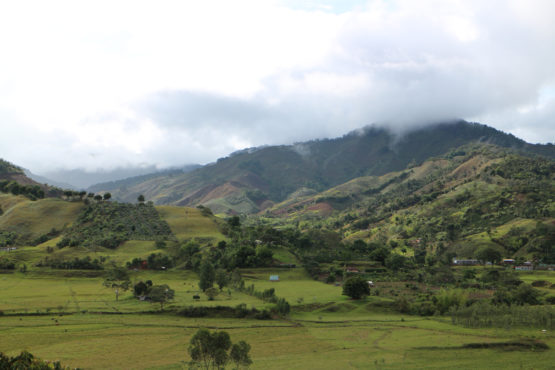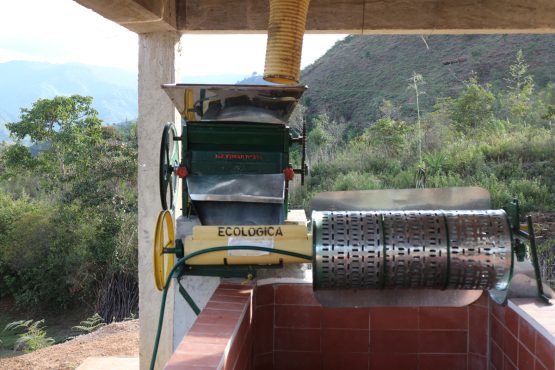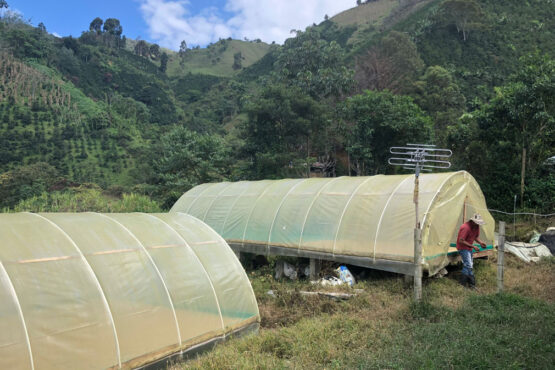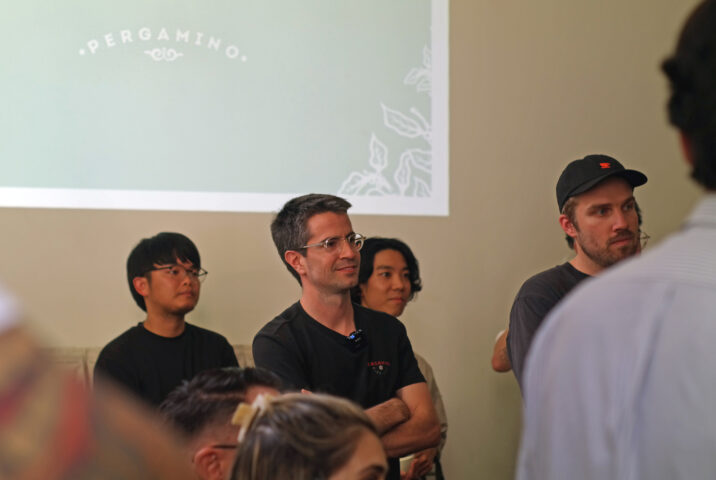El Encanto
Blackcurrant, lychee and lime cordial. Rich and vibrant, with great intensity and candied sweetness.
This 100% Chiroso variety microlot was produced by Jorge Cuéllar and his family, on their eleven hectare farm El Encanto (which translates to “the enchantment, or enchanting one” in Spanish), in the small community of Urrao, located in the municipality of Caicedo, in the state of Antioquia, Colombia.
El Encanto is located at 1,980m above sea level, in the rolling green hills surrounding Urrao, a unique coffee producing region in the valley of River Penderisco. Jorge is originally from Monserrate, Huila, but spent many years working as a farmhand in the Colombian state of Caldas. Here, he met Pergamino’s Director of Coffee Léo Henao who, at the time, was managing the farm and the two developed a strong bond based on their shared passion for coffee and exemplary work ethic. Léo eventually moved to Antioqiua to work with the Echavarría family of Santa Bárbara Estate and MCM’s export partner Pergamino, and Jorge followed him to take the role of his righthand person.
Jorge spent five years at Santa Bárbara Estate, mastering the different growing and processing practices applied. In time, he decided to return to Huila, intent on establishing a farm where he could live with his family and implement everything he had learned from working with Léo. Unfortunately, the region’s landscape for new producers was desolate and challenging — providing little to no opportunities to break new ground. Knowing that he had open doors in Antioquia, Jorge decided to settle in the state permanently, taking on farm management responsibilities at Finca Los Palomos, which had recently been purchased by Léo Henao and his brother Felipe in the region of Urrao.
Over the next seven years, the three formed an incredible team, maximising Urrao’s terroir to grow exceptionally healthy coffee trees and applying novel fermentation techniques during processing to enhance their crop’s quality. In 2020, under Jorge’s management, the farm took the top prize at Colombia’s Cup of Excellence with a lot named ‘Los Tres Mosqueteros’ — “The Three Musketeers” in Spanish — in reference to the trio’s adventurous spirit. When the Henao brothers sold their farm in 2022, they purchased an 11-hectare lot and gifted it to Jorge, bringing El Encanto to life. At last, after some 15 years of working in coffee fields, Jorge had a parcel to call his own.
Jorge has been living at El Encanto with wife Luz Noscue and three children (Nicolás, Luisa and Yulieth) ever since. Along with more traditional varieties, Jorge has planted more Chiroso and Gesha varieties, knowing these fetch higher premiums and allow him to fully utilise the growing and processing expertise he gained throughout his career. Today, Jorge is considered one of the region’s most promising producers, and he has helped our export partners Pergamino develop stronger relationships with the local network of specialty-focused coffee growers.
ABOUT CHIROSO
Chiroso was initially planted in Urrao as it is well-suited to the cooler temperatures of the region and has higher productivity than its alternative, Caturra. It has since been recognised for its unique and complex cup characteristics and is becoming more sought after by specialty buyers. Recent DNA studies done on the variety have shown Chiroso to be an Ethiopian landrace variety (similar to the famous Gesha variety), though it is still unclear how it ended up in Antioquia, Colombia.
ABOUT URRAO
Urrao is a unique and special coffee-growing region, located in the valley of River Penderisco, at around 1,900m above sea level. Unlike other producing regions in Colombia, which are characterised by deep canyons and massive, rugged mountains, Urrao is covered in rolling green hills, calm pastures and beautiful rivers that snake through the landscape. This geography guarantees cool temperatures year-round, typically only reaching between 12-25 degrees. This cool climate is ideal for the slow ripening of coffee cherries, leading to denser beans and a sweeter, more complex cup profile.
Until recently, Urrao was overlooked as a coffee-producing region and dismissed by many as being too cold for good production. There is still very little coffee produced in the area, despite it being some of the most fertile land in Antioquia. Many farmers complement the income they make from coffee by growing Lulu, a type of passionfruit that tastes similar to a kiwi fruit and that is incredibly popular in Colombia. Coffee grown in Urrao is slowly becoming recognised and sought after for its high-quality and complexity. Farms in Urrao are very small – averaging less than two hectares – and are traditionally farmed. Fertilisation occurs around three times a year, usually after manual weeding, and pesticides are rarely used. The coffee is selectively hand-harvested, with most labour being provided by the farmers and their families.
Urrao is the traditional home of the Catío/Katío culture, which was shared throughout several communities across Antioquia. The region’s first inhabitants, the Catío, did not survive the Spanish invasion of Colombia, though their two most famous caciques (monarchs), Toné and Nutibara, are still celebrated with monuments and yearly festivities in Urrao. In the decades that followed the conquest of Catío territory, groups of Embará people (a different indigenous nation who migrated from the Caribbean) settled in the region, and came to be known as Emberá Catío/Katío. Like many of Colombia’s indigenous people, the Emberá Catío are spearheading the fight for recognition of traditional land rights and the protection of waterways, as their communities largely rely on fishing for sustenance.
ABOUT ANTIOQUIA
Antioquia is located in central northwestern Colombia. Coffee was introduced to the region in the latter part of the 19thcentury. Since then, this mountainous, fertile department has 128,000 hectares of coffee that is produced by a mix of large estates and tiny farms.
Antioquia only recently became more accessible to specialty coffee buyers – largely thanks to a transformation of the department led by Sergio Fajardo, who was the governor of the department between 2012-2016. Sergio transformed Antioquia’s capital city, Medellín, from a violent and dangerous place to a world-class tourist destination with a strong economy. Coffee has played a significant role in this this transformation, and as access to many producers has improved, the region has become one of Colombia’s most important and celebrated coffee-producing areas.
Our export partners for this coffee, Pergamino, have worked hard commercialise specialty-grade coffee throughout Antioquia, and have uncovered some stunning coffees and very dedicated producers in the process. They work closely with the producers to give them feedback on their coffees (provided by Pergamino’s expert team of cuppers) and provide top up payments when the coffee is sold at a higher premium.
Head here to learn more about the work of Pergamino in Colombia.
HOW THIS COFFEE WAS PROCESSED
This coffee was selectively hand-harvested, with most labour being provided by Jorge and his family. The coffee was processed using the washed method at El Encanto’s ‘micro-beneficio’ (mill).
The coffee was then hand pulped and placed into a fermentation tank. Because of the cooler climate in Urrao, producers like Jorge tend to ferment the coffees for longer than usual and will often blend several days’ worth of pickings over a three day period. Every day freshly picked cherry is pulped and added to the mix. This is key, as it lowers the pH level and – along with the cooler temperatures – allows for an extended fermentation process. This fermentation process contributes to a vibrant, winey acidity in the coffee’s cup profile.
The coffee was then carefully dried (over 10–18 days) on a patio. Once dry, the coffee was delivered to Pergamino’s warehouse, where it was cupped and graded, and then rested in parchment until it was ready for export.
